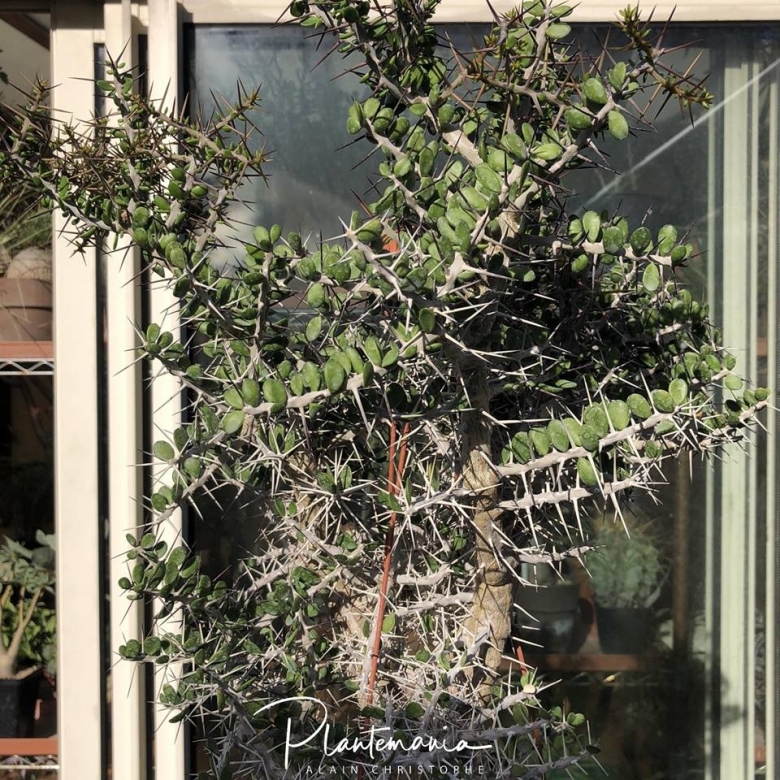
Alluaudia comosa Photo by: © Plantemania
Origin and Habitat: South West and South Madagascar (Toliara to Taolanaro, from Tulear to Fort Dauphin).
Habitat and ecology: Alluaudia comosaSN|35431]]SN|35431]] prefers limestone and grows on the "plateau calcaire" of the south-west. This species is an indicator of calcareous soils.
Synonyms:
Common Names include:
ENGLISH: Hairy Alluaudia
MALAGASY: sonoratsy
Description: Alluaudia comosaSN|35431]]SN|35431]] is a densely spiny branching shrubs or small tree 2-6(-10) metres tall, with a short trunk, and the branches stop at the top in a flat crown, often cushion-like. Thus, the whole tree is shaped like a funnel or large mushroom. This characteristic silhouette is easy to recognize even at a distance.
Stem: Usually 2, thickened, divergent.Even the juvenile forms are profusely branched.
Spines: Grey, round-based, solitary, 1.5-3.5 cm long.
Leaves. 1(-2) sbtended by a spine, obovate to suborbicular fleshy 10-22 mm long, 10 mm broad, sometimes with retuse apex.
Inflorescences. Alluaudia comosaSN|35431]]SN|35431]] have extremely reduced inflorescences: only the terminal flower of a dichasium is developed. This species is cauliflor (stem flowering) and the flowers stand close together adpressed on the stems, it is the only species to do so in the whole Family.
Flowers: In umbels of 5-10, white. Stamens brilliant carmine-red.
Fruits. Flattened ovoid, 2-2.5 cm long, about 1.6 cm in diameter.
Chromosome number. 2n = 48.
Bibliography: Major references and further lectures
6) Urs Eggli “Illustrated Handbook of Succulent Plants: Dicotyledons” Springer, 2002
7) A. Jolly, P. Oberle, R. Albignac, “Key Environments: Madagascar” Elsevier, 22 gen 2016
8) Werner Rauh, Herman Schwartz, “Succulent and xerophytic plants of Madagascar”, Volume 2, Strawberry Press, 1998
9) The Spine, Volumes11-15, 1962
10) Bothalia, Volume 14, Botanical Research Institute, Department of Agricultural Technical Services., 1982
11) Hermann Jacobsen, “Abromeitiella to Euphorbia”, Blandford Press, 1960
12) John A. Burton, Sabina G. Knees, Mike Read, Royal Botanic Gardens, Kew, Great Britain. Dept. of the Environment, “CITES guide to plants in trade”, Dept. of the Environment, 1994










